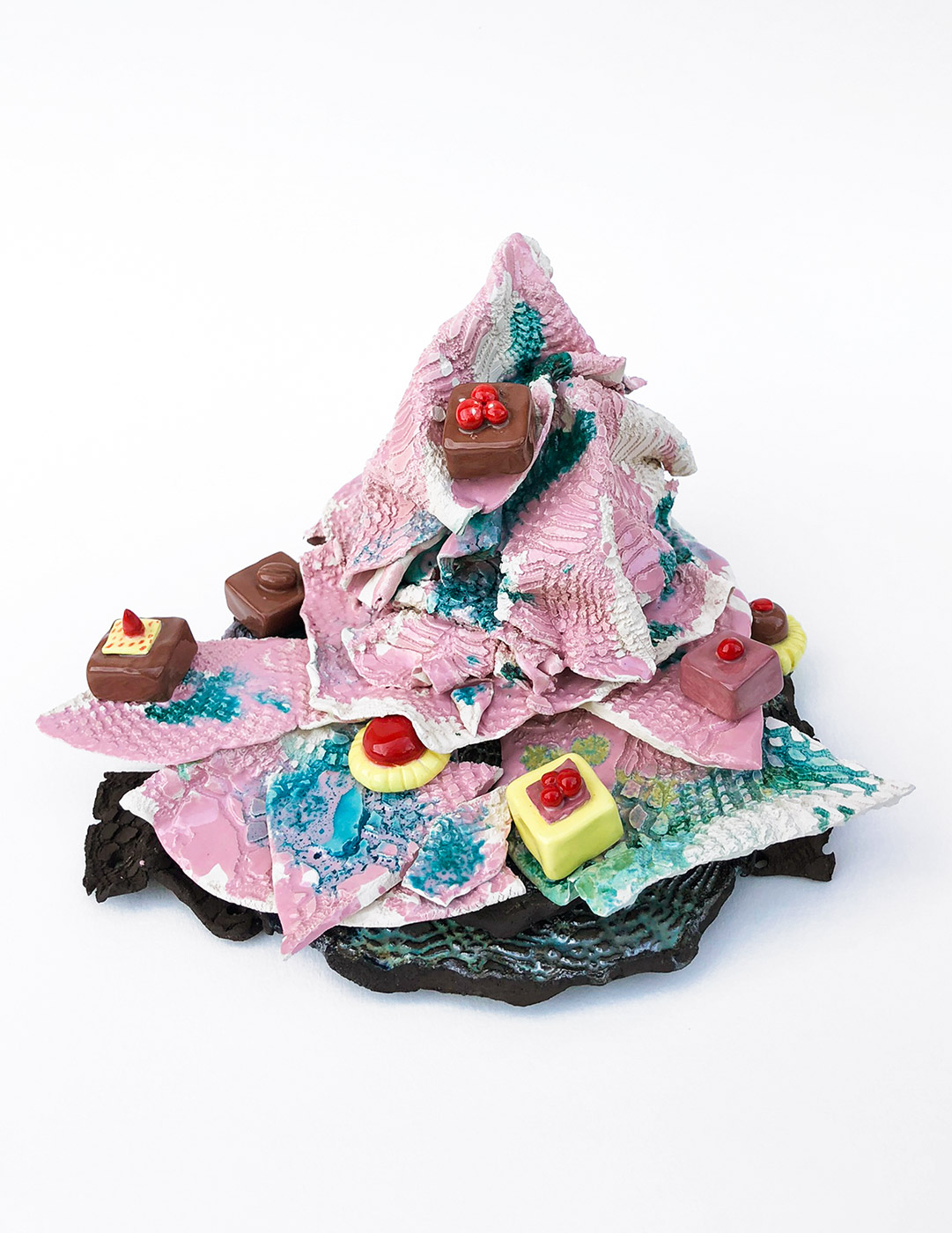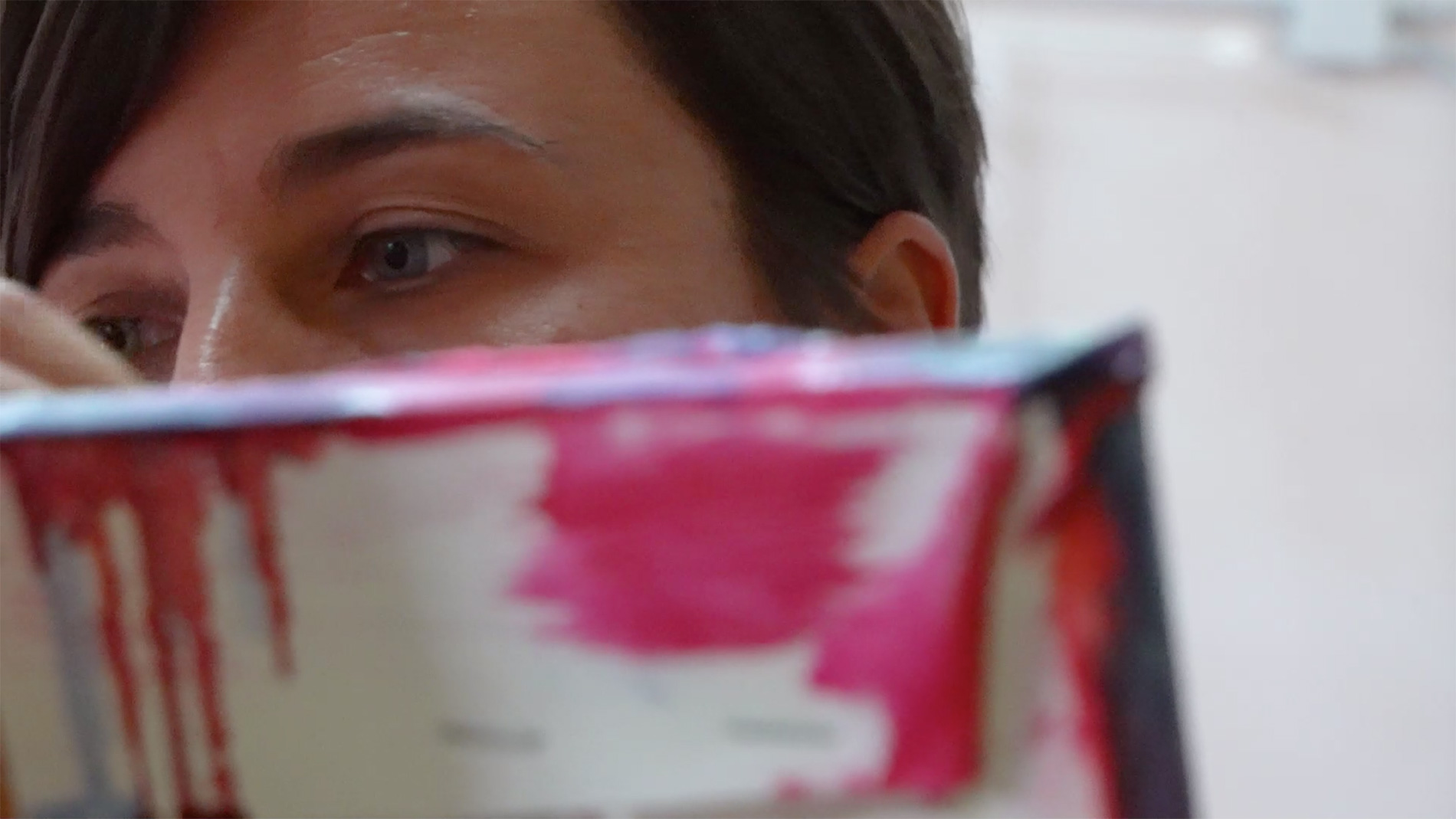Description: L’atto del mangiare provoca in noi un’esperienza sensoriale completa. Il cibo attiva tutti i sensi, stimolando in noi reazioni che la nostra società ci chiede spesso di controllare.
Un pasticcino si prende con le dita e in modo leggero lo si avvicina alla bocca. Si può imboccare e gustare. Si tratta di un atto veloce, un peccato di gola, che talvolta ci mette in imbarazzo perché svela il nostro lato fanciullesco. Stimola la nostra bramosia, come atto erotico che prevede un prestatore creativo, il pasticcere, e un fuitore che gode di un piacere temporaneo. Si crea così una relazione tra i due soggetti protagonisti (pasticcere e cliente) e l’oggetto pasticcino ne è il simulacro. Il pasticcino diventa il mascheramento di quella relazione, in quanto cela il reale atto erotico in sè.
The act of eating provokes a complete sensory experience in us. Food activates all our senses, stimulating reactions that our society often asks us to control. A small pastry is taken with the fingers and lightly brought to the mouth. It can be nibbled and tasted. It is a quick act, a sin of gluttony, which sometimes embarrasses us because it reveals our childish side. It also stimulates our lust, as an erotic act that involves a creative lender, the pastry chef, and the user who enjoys temporary pleasure. A relationship is thus created between the two protagonists (the maker and the user) and the pastry is its simulacrum. Pastry becomes the disguise of that relationship, as it conceals the real erotic act itself.
The act of eating provokes a complete sensory experience in us. Food activates all our senses, stimulating reactions that our society often asks us to control. A small pastry is taken with the fingers and lightly brought to the mouth. It can be nibbled and tasted. It is a quick act, a sin of gluttony, which sometimes embarrasses us because it reveals our childish side. It also stimulates our lust, as an erotic act that involves a creative lender, the pastry chef, and the user who enjoys temporary pleasure. A relationship is thus created between the two protagonists (the maker and the user) and the pastry is its simulacrum. Pastry becomes the disguise of that relationship, as it conceals the real erotic act itself.
Sexi Patisserie
Description: L’atto del mangiare provoca in noi un’esperienza sensoriale completa. Il cibo attiva tutti i sensi, stimolando in noi reazioni che la nostra società ci chiede spesso di controllare.
Un pasticcino si prende con le dita e in modo leggero lo si avvicina alla bocca. Si può imboccare e gustare. Si tratta di un atto veloce, un peccato di gola, che talvolta ci mette in imbarazzo perché svela il nostro lato fanciullesco. Stimola la nostra bramosia, come atto erotico che prevede un prestatore creativo, il pasticcere, e un fuitore che gode di un piacere temporaneo. Si crea così una relazione tra i due soggetti protagonisti (pasticcere e cliente) e l’oggetto pasticcino ne è il simulacro. Il pasticcino diventa il mascheramento di quella relazione, in quanto cela il reale atto erotico in sè.
The act of eating provokes a complete sensory experience in us. Food activates all our senses, stimulating reactions that our society often asks us to control. A small pastry is taken with the fingers and lightly brought to the mouth. It can be nibbled and tasted. It is a quick act, a sin of gluttony, which sometimes embarrasses us because it reveals our childish side. It also stimulates our lust, as an erotic act that involves a creative lender, the pastry chef, and the user who enjoys temporary pleasure. A relationship is thus created between the two protagonists (the maker and the user) and the pastry is its simulacrum. Pastry becomes the disguise of that relationship, as it conceals the real erotic act itself.
The act of eating provokes a complete sensory experience in us. Food activates all our senses, stimulating reactions that our society often asks us to control. A small pastry is taken with the fingers and lightly brought to the mouth. It can be nibbled and tasted. It is a quick act, a sin of gluttony, which sometimes embarrasses us because it reveals our childish side. It also stimulates our lust, as an erotic act that involves a creative lender, the pastry chef, and the user who enjoys temporary pleasure. A relationship is thus created between the two protagonists (the maker and the user) and the pastry is its simulacrum. Pastry becomes the disguise of that relationship, as it conceals the real erotic act itself.
Technique used: serie di sculture in ceramica smaltata
glazed ceramic sculpture series
glazed ceramic sculpture series
Dimensions: Dimensioni varie
various dimensions
various dimensions
Production year: 2021 in corso
ongoing
ongoing

